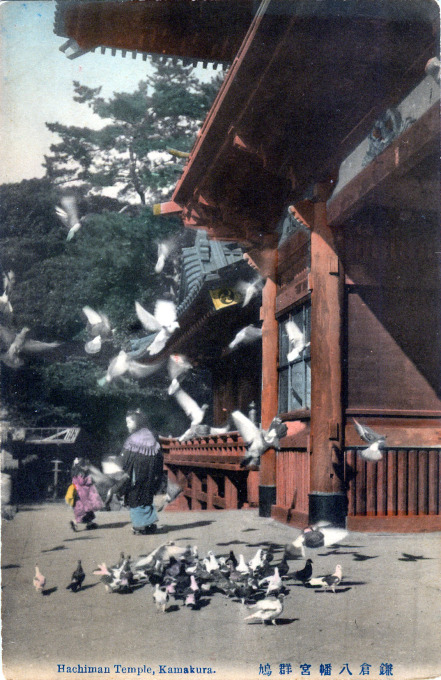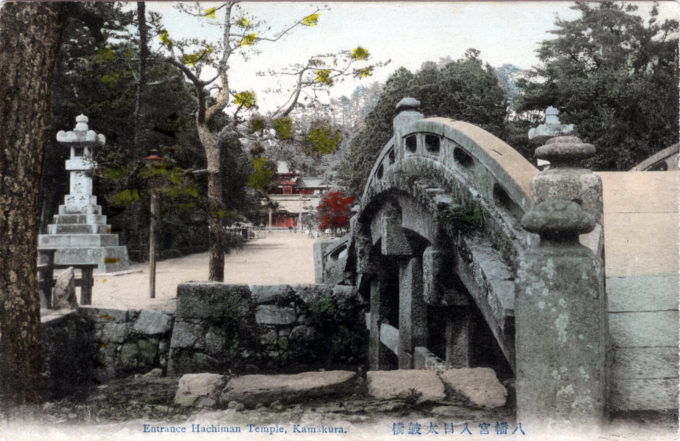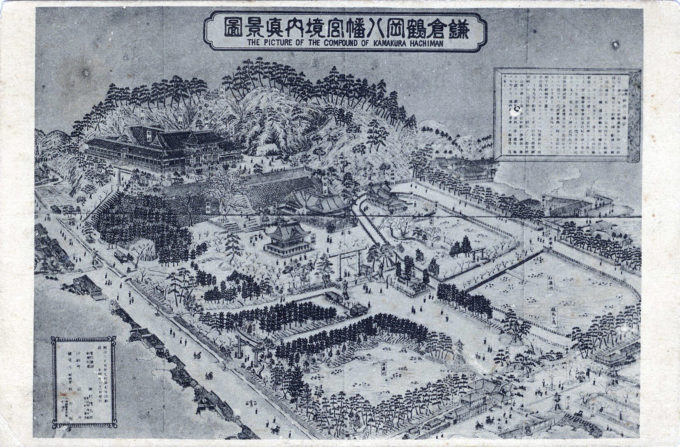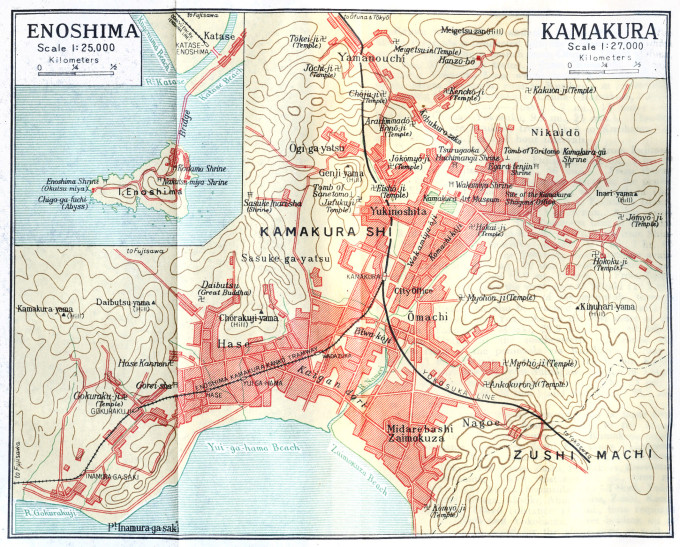“From earliest times Hachiman, the Japanese Mars, has been the deity specially worshipped by warriors and the military classes, the original dedication of the shrine receding through the centuries to fabulous antiquity.
“The first temple of Hachiman to be erected in Kamakura was of less imposing proportions and upon a considerably smaller scale than it assumed later … [I]n March 1191, a disastrous conflagration occurred in Kamakura and the [original] buildings of Hachiman were entirely destroyed. After this fire, Yoritomo caused the shrine of his patron god to be rebuilt in its present commanding situation. This was so speedily accomplished that the main temple and all the vassal buildings were completed within the year.
“… The temple was again attacked by fire in 1821 and again dstroyed. On this occasion, it was rebuilt and reestablished under the auspices of the 11th Tokugawa shogun, Ienari, the present structure dating from 1828.”
– Kamakura: Fact and Legend, by Iso Mutsu, 1985
“The Temple of Hachiman, the God of War, dating from the end of the 12th century, stands in a commanding position on a hill called Tsuru-ga-oka, and is approached by a stately avenue of pine-trees leading up the whole way from the sea-shore.
“Though both avenue and temple have suffered from the ravages of time, enough still remains to remind one of the ancient glories of the place. Three stone torn lead up to the temple, which stands at the head of a broad flight of stone steps. Notice the magnificent icho tree, nearly 20 ft. in circumference, said to be over a thousand years old.”
– A Handbook for Travellers in Japan, by Basil Hall Chamberlain & W.B. Mason, 1901
“Hachiman belongs to the heroic times of the empire of the Mikados. His mother was the Empress Jingu, who made the conquest of the three kingdoms of Corea, and to whom, also, divine honors are paid.
“Nearly all the large cities have a temple to Hachiman; but that of Kamakura is distinguished above all others by its special treasures. Two large buildings are devoted to the display of relics, among which, it is said, are the spoils of Corea and the Mongol invasions, together with the objects plundered from the Portuguese and the native Christians at the time of the expulsion of the former.
“On our approach to the temple, it was easy to see that our appearance had been signalled in advance, for the bonzes ran with all speed through the courts to close the buildings containing the relics.”
– Japan in Our Day, by William Elliot Griffis, 1903
From the wiki: “Throughout the Japanese medieval period, the worship of Hachiman [god of archery and warriors] spread throughout Japan among not only samurai, but also the peasantry. So much so was his popularity that presently there are 25,000 Shinto shrines in Japan dedicated to Hachiman, the second most numerous after shrines dedicated to Inari [rice god].
“Until the issuing of the Shinto and Buddhism Separation Order in 1868, during the time of the Restoration, Tsurugaoka Hachiman-gu served as both a Shinto shrine and Buddhist temple. It is, today, considered the most important Shinto shrine in Kamakura, the old capital where Nichiren Buddhism was introduced into Japan, and Kamakura is a city still filled with many holy icons representing both beliefs.”






Pingback: "To shoot an arrow", c. 1920. | Old Tokyo
Pingback: Engakuji Temple, Kamakura, c. 1940. | Old Tokyo
Pingback: Seven Lucky Gods of Japan, c. 1920. | Old Tokyo